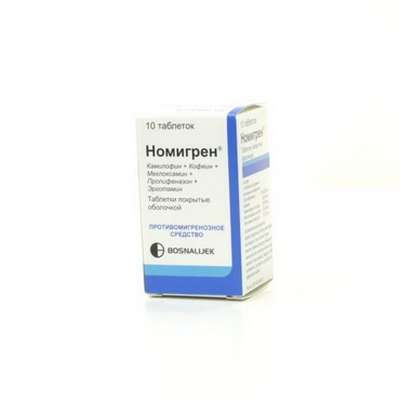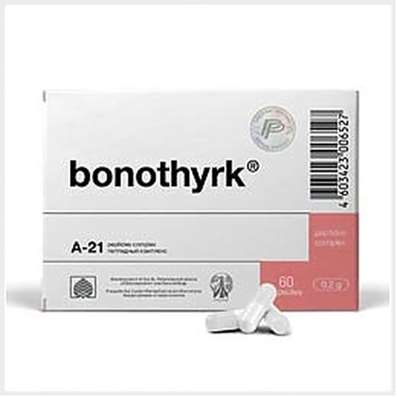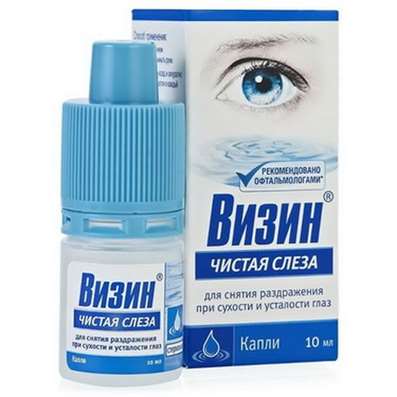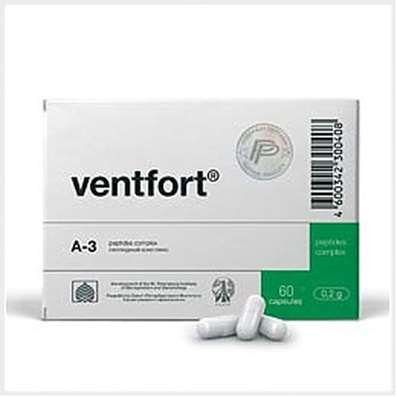Instruction for use: Ketorolac
I want this, give me price
Active substance Ketorolac
ATX Code ņ“’ M01AB15 Ketorolac
Pharmacological group
Non-steroidal anti-inflammatory drug [NSAIDs - Acetic acid derivatives and related compounds]
Nosological classification (ICD-10)
K08.8 Other specified changes in teeth and their supporting apparatus
Impaired chewing function, Chewing function disorders
M54.1 Radiculopathy
Acute sciatica, Radiculopathy, Radiculitis, Radiculitis with radicular syndrome, Acute radiculopathy, Pain syndrome with radiculitis, Subacute radiculitis, Radiculitis, Chronic radiculitis, Diseases of the spinal column
M54.9 Dorsalgia, unspecified
Pain syndrome with radiculitis, Pain syndrome in the back,Pain with radiculitis, Degenerative changes in the spine, Degenerative and dystrophic disease of the spine and joints, Degenerative disease of the spine, Osteoarthrosis of the spine, Painful lesions of the spine
M79.0 Other unspecified rheumatism
Degenerative rheumatic disease, Degenerative and rheumatic diseases of the tendons, Degenerative rheumatic diseases, Localized forms of rheumatism of soft tissues, Rheumatism, Rheumatism with a pronounced allergic component, Rheumatism of the articular and extraarticular, Rheumatic attack, Rheumatic complaints, Rheumatic diseases, Rheumatic disease of the spine, Relapses of rheumatism, Articular and extra-articular rheumatism, Articular and muscular rheumatism, Articular rheumatism, Articular syndrome with rheumatism, Chronic rheumatic pain, Chronic articular rheumatism, Rheumatoid diseases, Rheumatic diseases of the intervertebral disc
M79.1 Myalgia
Myofascial pain syndromes ,Pain syndrome in musculo-articular diseases, Pain syndrome in chronic inflammatory diseases of the musculoskeletal system, Pain in the muscles, Tenderness of muscles, Muscular soreness in severe physical exertion, Painful conditions of the musculoskeletal system, Pain in the musculoskeletal system, Pain in the muscles, Pain at rest, Muscle aches, Muscle pain, Musculoskeletal pain, Myalgia, Muscle pain, Muscle pain at rest, Muscle pain, Muscular pain of non-rheumatic origin, Muscle pain of rheumatic origin, Acute muscle pain, Rheumatic pain, Rheumatic pains, Myofascial syndrome, Fibromyalgia
M79.2 Neurology and neuritis, unspecified
Pain syndrome with neuralgia, Brachialgia, Occipital and intercostal neuralgia, Neuralgia, Neuralgic pain, Neuralgia, Neuralgia of intercostal nerves,Neuralgia of the posterior tibial nerve, Neuritis, Neuritis traumatic, Neuritis, Neurological Pain Syndromes, Neurological contractures with spasms, Acute neuritis, Peripheral neuritis,Post-traumatic neuralgia,Severe pain of a neurogenic nature, Chronic neuritis, Essential neuralgia
R52.1 Constant unrestrained pain
Pain syndrome in oncology practice, Pain syndrome pronounced, Pain syndrome in malignant neoplasms, Pain syndrome in cancer, Pain syndrome with tumors, Pain syndrome in cancer patients, Pain in malignant neoplasms, Pain in malignant tumors, Pain in tumors, Pain in cancer patients, Pain in bone metastases, Pain in cancer, Malignant pain syndrome, Intensive chronic pain, Intensive pain syndrome, Intensive non-curable pain syndrome, Intensive chronic pain syndrome, Unrestrained pain, Unrestrained pain, Tumor pain, Post-traumatic pain syndrome, Severe pain, Chronic pain, Chronic Pain Syndrome
R52.2 Other constant pain
Pain syndrome, rheumatic origin, Pain at vertebral lesions, Pain in the chamber, Pain for burns, Pain syndrome weak or moderate, Perioperative pain,Moderate to severe pain, Moderately or weakly expressed pain syndrome, Moderate to severe pain, Ear pain of otitis, Neuropathic pain, neuropathic pain
R52.9 Unspecified Pain
Pain after cholecystectomy, Pain shooting, Non-malignant pain, Obstetric and gynecological pain, Pain syndrome, Pain in the postoperative period, Pain in the postoperative period after orthopedic surgery, Pain of inflammatory genesis, Pain than cancer genesis, Pain syndrome after diagnostic procedures, Pain after surgery Diagnostic, Pain after surgery, Pain after orthopedic surgery, Pain after injuries, Pain after the removal of hemorrhoids, Pain at the non-rheumatic inflammation of nature, Pain in inflammatory lesions of the peripheral nervous system, Pain in diabetic neuropathy, Pain in acute inflammatory diseases of the musculoskeletal system, Pain when the tendon pathology, Pain smooth muscle spasm, Pain spasm of smooth muscles (renal and biliary colic, intestinal spasms, dysmenorrhea), Pain spasm of smooth muscles of internal organs, Pain spasm of smooth muscles of internal organs (kidney and biliary colic, intestinal spasms, dysmenorrhea), Pain in trauma syndrome, Pain with injuries and after surgical interventions, Pain in chronic inflammatory diseases of the musculoskeletal system, Pain with duodenal ulcer, Pain syndrome in gastric ulcer, Pain syndrome in gastric ulcer and duodenal ulcer, pain, Pain during menstruation, pain syndromes, painful condition, Painful foot fatigue, Sore gums when wearing dentures, Soreness of the cranial nerves exit points, Painful menstrual irregularities, Painful dressings, Painful muscle spasm, Painful teeth growth, Melosalgia, Pain in the area of the surgical wound, Pain in the postoperative period, Pain in the body, Pain after diagnostic procedures, Pain after orthopedic surgery, Pain after surgery, The pains of the flu, Pain in diabetic polyneuropathy, Pain for burns, Pain during sexual intercourse, Pain during diagnostic procedures, Pain during therapeutic procedures, for colds Pain, Pain in sinusitis, Pain in trauma, Pain traumatic, The pain in the postoperative period, Pain after diagnostic procedures, The pain after sclerotherapy, Pain after surgery, postoperative Pain, Pain postoperative and posttraumatic, posttraumatic pain, Pain when swallowing, Pain in infectious and inflammatory diseases of the upper respiratory tract, The pain of burns, The pain in traumatic muscle injury, Pain in trauma, The pain of tooth extraction, The pain of traumatic origin, Pain caused by spasm of smooth muscles, Expressed pain syndrome, Expressed pain syndrome, traumatic origin, Postoperative pain, Post-traumatic pain, Post-traumatic pain syndrome, Torpid pain, Traumatic pain, Traumatic pain, Mild pain, Moderately severe pain, Moderate pain, Polyarthralgia with polymyositis
T14.3 Dislocation, sprain and damage to the capsular-ligamentous apparatus of the joint of the unspecified area of the body
Painful stretching of muscles, Pain and inflammation in tension, Dislocation of dislocation, Degenerative changes in the ligamentous apparatus, Edema due to sprains and bruises, Edema after interventions for sprains, Damage and rupture of ligaments, The musculoskeletal system is damaged, Damage to ligaments, Damage to the joints, Ligament ruptures, Tendon tendons,Ruptures of the tendons of muscles,Stretching, Crick, Stretching of the muscle, Sprain, Tension of the tendons, Extensions,Stretch muscles, Sprains, Tension of the tendons, Injury of the musculoskeletal system, Injuries to the joints, Injuries of capsule-articular tissues, Injuries of the osteoarticular system, Injuries to ligamentsInjuries to the joints, Joint wounds, Stretching of the ligamentous apparatus, Habitual stretching and tearing
T14.9 Injury unspecified
Pain syndrome after trauma, Pain syndrome with injuries, Pain syndrome with trauma and after surgery, Pain in case of injury, Pain of a traumatic nature, Joint pain with injuries, Postoperative and post-traumatic pain, Pain in case of injury, Pain of a traumatic origin, Severe pain syndrome of traumatic origin, Deep tissue damage, Deep scratches on the trunk, Closed injury, Minor Household Injuries, Minor skin damage, Violations of the integrity of soft tissues, Uncomplicated trauma, Extensive traumatic injury, Acute pain syndrome of traumatic origin, Edema with trauma, Postponed sports injuries, Post-traumatic pain, Soft tissue injuries, Joint wounds, Sports injuries, Injury, Traumatic pain, Traumatic pains, Traumatic infiltrate,Injuries to sports
T88.9 Complication of surgical and medical care, unspecified
Pain in the postoperative period, Pain in the postoperative period after orthopedic surgery, Pain syndrome after diagnostic procedures, Pain after surgery Diagnostic, Pain after surgery, Pain after orthopedic surgery, Pain after the removal of hemorrhoids, Pain in the application of excimer laser, Pain with injuries and after surgical interventions, Pain syndromes in the dental practice, Painful diagnostic intervention, Painful diagnostic manipulations, Painful instrumental diagnostic procedures, Painful instrumental manipulation, Painful treatments, Painful manipulations, Painful dressings, Painful therapeutic interventions, Pain in the area of the surgical wound, Pain in the postoperative period, Pain after diagnostic procedures, Pain after orthopedic surgery, Pain during diagnostic procedures, Pain during therapeutic procedures, Pain in orthopedics, The pain in the postoperative period, Pain after diagnostic procedures, The pain after sclerotherapy, The pain after dental surgery, postoperative Pain, Pain postoperative and posttraumatic, The pain of tooth extraction, Inflammation after surgery or injury, Inflammation after orthopedic surgery, Inflammation after surgery, The inflammatory syndrome after surgery, Festering postoperative fistula, Operating wound, Complications after tooth extraction
Composition and form of release
Solution for intramuscular injection 1 ml
ketorolac trometamol (ketorolac tromethamine) 30 mg
auxiliary substances: disodium edetate dihydrate (Trilon B); Ethanol (ethyl alcohol) (in terms of anhydrous); propylene glycol; sodium chloride; sodium hydroxide 1 M solution; water for injections
1 ml in ampoules of amber or light-protective glass. By 5 ampoules in a contoured cell pack of PVC film (polyvinyl chloride). For 1 or 2 contour packs with a scarifier ampoule and instructions for use in a pack of cardboard. When using ampoules with a dot or a ring of fracture, the scarifier is not embedded.
Description of dosage form
Transparent liquid of light yellow color.
Characteristic
NSAIDs (non-steroidal anti-inflammatory drugs).
pharmachologic effect
Pharmacological action - anti-inflammatory, antipyretic, analgesic.
Pharmacodynamics
It has a pronounced analgesic effect, has also an anti-inflammatory and moderate antipyretic effect. The mechanism of action is associated with nonselective inhibition of COX-1 and COX-2 activity, which catalyzes the formation of PG from arachidonic acid, which play an important role in the pathogenesis of pain, inflammation and fever. By the strength of the analgesic effect comparable to morphine, it significantly exceeds other NSAIDs. After the / m introduction, the beginning of the analgesic effect is observed after 0.5 h, the maximum effect is achieved in 1-2 hours.
Pharmacokinetics
Absorption at the / m introduction is complete and fast. Cmax after the / m introduction 30 mg - 2.4 mcg / ml, 60 mg - 4.5 mcg / ml, Tmax - 15 to 73 min. Binding to plasma proteins - 99%.
The time for achieving CSS with parenteral administration is 24 hours, with the appointment 4 times a day (higher than the subtherapeutic one) and is 15 mg at 0.9 mcg / ml for injection, 30 mg for 1.9 mcg / ml.
Vd - 0,15-0,3 l / kg. In patients with renal insufficiency, Vd of the drug can be increased 2-fold, and Vd of its R-enantiomer - by 20%.
Penetrates into breast milk. More than 50% of the administered dose is metabolized in the liver with the formation of pharmacologically inactive metabolites. The main metabolites are glucuronides, which are excreted by the kidneys, and p-hydroxycetorolac. It is excreted 91% by the kidneys, 6% by the intestine.
T1 / 2 in patients with normal renal function on average - about 5 hours. T1 / 2 increases in elderly patients and is shortened in young patients. The liver function does not affect T1 / 2. In patients with impaired renal function with a creatinine concentration in the plasma of 19-50 mg / l (168-442 μmol / L), T1 / 2 increases to 10 hours, with more severe renal failure - more than 13 hours.
Total Cl with a / m introduction of 30 mg - 0.02 l / h / kg (0.019 l / h / kg in elderly patients), in patients with renal insufficiency with a plasma creatinine concentration of 19-50 mg / l with IM the introduction of 30 mg - 0.015 l / h / kg. It is not excreted by hemodialysis.
Indications
Pain syndrome of strong and moderate severity:
injuries;
toothache;
pain in the postpartum and postoperative period;
oncological diseases;
myalgia, arthralgia, neuralgia, sciatica;
dislocations, sprains;
rheumatic diseases.
It is intended for symptomatic therapy, reducing pain and inflammation at the time of use, the progression of the disease is not affected.
Contraindications
hypersensitivity;
complete or incomplete combination of bronchial asthma, recurrent nasal polyposis and paranasal sinuses and intolerance to acetylsalicylic acid or other NSAIDs (including in the anamnesis);
urticaria, rhinitis caused by taking an NSAID (in history);
intolerance to drugs of pyrazolone series;
hypovolemia (regardless of the cause that caused it);
erosive and ulcerative lesions of the gastrointestinal tract in the stage of exacerbation;
hypocoagulation (including hemophilia);
bleeding or a high risk of their development;
severe renal failure (Cl creatinine <30 mL / min);
severe hepatic impairment or active liver disease;
condition after aorto-coronary bypass surgery;
confirmed hyperkalemia;
pregnancy (III trimester);
inflammatory bowel disease;
the period of childbirth;
lactation period;
children under 16 years of age (safety and efficacy not established).
Carefully:
bronchial asthma;
the presence of factors that increase toxicity in relation to the gastrointestinal tract: alcoholism, tobacco smoking and cholecystitis;
postoperative period;
chronic heart failure;
edematous syndrome;
arterial hypertension;
impaired renal function (plasma creatinine below 50 mg / l);
cholestasis;
active hepatitis;
sepsis;
systemic lupus erythematosus;
simultaneous reception with other NSAIDs;
IHD;
cerebrovascular diseases;
dyslipidemia / hyperlipidemia;
diabetes;
diseases of peripheral arteries;
Cl creatinine 30-60 ml / min;
ulcerative lesions of the gastrointestinal tract in anamnesis;
presence of Helicobacter pylori infection;
long-term use of NSAIDs;
severe physical illness;
simultaneous administration of oral GCS (including prednisolone), anticoagulants (including warfarin), antiaggregants (including clopidogrel), SSRIs (including citalopram, fluoxetine, paroxetine, sertraline);
old age (over 65 years);
pregnancy (I and II trimester).
Side effects
Often -> 3%; less often - 1-3%; rarely - <1%.
From the digestive system: often - gastralgia, diarrhea; less often - stomatitis, flatulence, constipation, vomiting, sensation of stomach overflow; rarely - loss of appetite, nausea, erosive and ulcerative lesions of the gastrointestinal tract (including with perforation and / or bleeding - abdominal pain, spasm or burning in the epigastric region, blood in the feces or melena, vomiting with blood or the type of "coffee thick, "nausea, heartburn, etc.), cholestatic jaundice, hepatitis, hepatomegaly, acute pancreatitis.
From the urinary system: rarely - acute renal failure, low back pain, hematuria, azotemia, hemolytic uremic syndrome (hemolytic anemia, renal failure, thrombocytopenia, purpura), frequent urination, increase or decrease in urine volume, nephritis, edema of kidney genesis.
From the senses: rarely - hearing loss, ringing in the ears, visual impairment (including blurred vision).
On the part of the respiratory system: rarely - bronchospasm or dyspnoea, rhinitis, pulmonary edema, laryngeal edema (shortness of breath, difficulty breathing).
From the central nervous system (central nervous system): often - headache, dizziness, drowsiness; rarely - aseptic meningitis (fever, severe headache, convulsions, neck and / or neck stiffness), hyperactivity (mood changes, anxiety), hallucinations, depression, psychosis, fainting.
From the CCC (cardiovascular system): less often - increased blood pressure.
From the hemopoiesis: rarely - anemia, eosinophilia, leukopenia.
From the side of the hemostasis system: rarely - bleeding from a postoperative wound, nosebleeds, rectal bleeding.
From the skin: less often - skin rash (including maculopapular rash), purpura; rarely exfoliative dermatitis (fever with chills or without it, hyperemia, densification or flaking of the skin, enlargement and / or soreness of the tonsils), urticaria, malignant exudative erythema (Stevens-Johnson syndrome), toxic epidermal necrolysis (Lyell's syndrome).
Local reactions: less often - burning or pain at the injection site.
Allergic reactions: rarely anaphylaxis or anaphylactoid reactions (skin discoloration, skin rash, hives, skin itch, tachypnea or dyspnea, edema of the eyelids, periorbital edema, shortness of breath, shortness of breath, chest pain, wheezing).
Other: often - swelling (face, legs, ankles, fingers, feet, weight gain); less frequent - increased sweating; rarely - swelling of the tongue, fever.
Interaction
Admission with other NSAIDs, GCS, ethanol, corticotropin, calcium preparations increases the risk of ulceration of the gastrointestinal mucosa and the development of gastrointestinal bleeding.
Simultaneous administration with anticoagulant drugs (coumarin and indanedione derivatives, heparin, thrombolytic agents - alteplase, streptokinase, urokinase), antiplatelet drugs, cephalosporins, valproic acid and acetylsalicylic acid increases the risk of bleeding.
Reduces the effect of hypotensive and diuretic drugs (reduces the synthesis of PG in the kidneys).
The appointment together with methotrexate increases hepato- and nephrotoxicity (their joint appointment is possible only with the use of low doses of the latter and control of its concentration in the plasma).
When appointed with other nephrotoxic drugs (including with drugs of gold), the risk of developing nephrotoxicity increases.
LS, which block tubular secretion, reduce the clearance of ketorolac and increase its concentration in the plasma.
Increases the effect of narcotic analgesics.
Myelotoxic drugs (drug) increase the manifestation of hematotoxicity of the drug.
Dosing and Administration
In / m (intramuscularly). For parenteral administration to patients aged 16 to 64 years with a body weight exceeding 50 kg, IM for 1 administration is administered not more than 60 mg; usually 30 mg every 6 hours. Adult patients with a body weight of less than 50 kg or with chronic renal failure per 1 injection are administered no more than 30 mg; usually 15 mg (no more than 20 doses in 5 days). Maximum daily doses for patients from 16 to 64 years with a body weight exceeding 50 kg are 90 mg / day; adult patients with a body weight of less than 50 kg or with chronic renal failure, as well as elderly patients (over 65 years of age) - 60 mg. The duration of treatment should not exceed 5 days.
Overdose
Symptoms (with a single injection): abdominal pain, nausea, vomiting, erosive-ulcerative gastrointestinal tract (gastrointestinal tract), renal dysfunction, metabolic acidosis.
Treatment: symptomatic (maintenance of vital body functions). Dialysis is ineffective.
special instructions
Before prescribing the drug, it is necessary to clarify the question of the previous allergy to the drug or NSAIDs. Because of the risk of developing allergic reactions, the first dose is administered under close supervision of the doctor.
Hypovolemia increases the risk of developing nephrotoxic adverse reactions. If necessary, you can prescribe in combination with narcotic analgesics. It is not recommended to be used as a medicine for premedication, maintenance of anesthesia.
When co-administered with other NSAIDs, fluid retention, cardiac decompensation, and increased blood pressure may occur. The effect on platelet aggregation stops after 24-48 hours. Do not use simultaneously with paracetamol for more than 5 days.
Patients with blood clotting disorder are appointed only with a constant control of the number of platelets, it is especially important for postoperative patients requiring careful control of hemostasis.
Antacid drugs, misoprostol, omeprazole are prescribed to reduce the risk of development of NSAID-gastropathy.
The risk of developing drug complications increases with prolonged treatment (in patients with chronic pain) and an increase in the dose of the drug more than 40 mg / day. During the treatment period, care must be taken when driving vehicles and engaging in other potentially hazardous activities that require increased concentration and speed of psychomotor reactions. To reduce the risk of developing adverse events on the part of the gastrointestinal tract, a minimum effective dose should be used with the minimum possible short course.
Conditions of leave from pharmacies
On prescription.
storage conditions
In the dark place at a temperature of 15-25 į C.
Keep out of the reach of children.
Shelf life
2 years.
Do not use after the expiry date printed on the package.

 Cart
Cart





